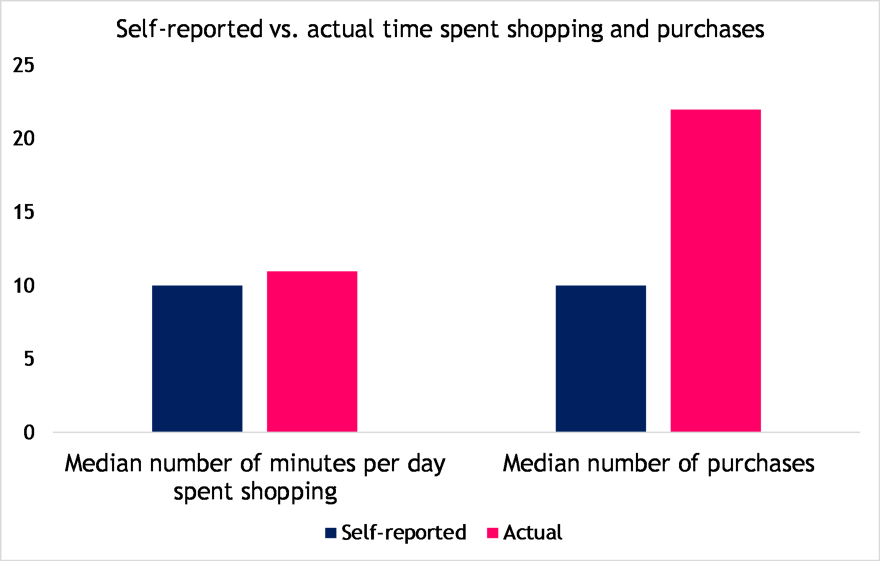According to new research by OpenUp, a behavioral research start-up based in New York, online shoppers have a good grasp of how much time they spent browsing for and purchasing items — but they have a far more tenuous grasp of how much money they spent.
The 1,000 subjects studied over two months in 2016 "severely underestimated what they actually purchased," writes Ashwini Anburajan, founder and CEO of OpenUp.
In fact, they spent twice as much money online as they thought they had.

OpenUp completed its analysis using the behavioral and social data of more than 900 women from November to December 2016.
It reports:
Users surveyed reported shopping 10 minutes a day with a median of 10 items purchased per month. In our behavioral panel we found that the median was 11 minutes per day with 22 items purchased. (The average was 17.7 minutes and 41 purchases, but our sample had a right skew, making median a better overall measurement.)
So consumers had a strong understanding of how much time they spent online in a specific activity, but they severely underestimated what they actually purchased.
Companies like Amazon have worked hard to make shopping on their sites a frictionless experience. Apparently they have also succeeded in creating the kind of lulling effect by which gambling establishments are often characterized.
"Being online is like being in a Vegas casino," Aburajan tells CNBC. "You're in an environment that's been optimized to grab your attention and a share of your wallet."
She adds, "The internet is a virtual mall. It's been designed to get you to waste time, distract you and spend money. We talk about how we lose minutes and hours online. But we need to start thinking about how we lose money too."

